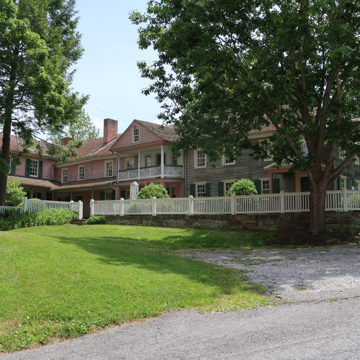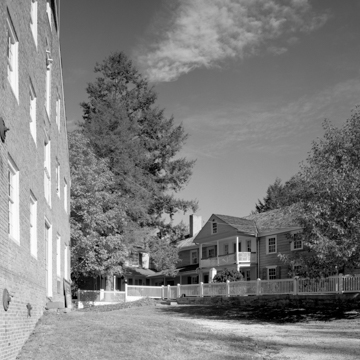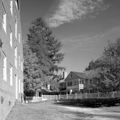A joint venture or “union” between brothers Andrew and David Shriver, Union Mills was the first industrial complex in the region and remains today one of the best preserved and documented. A self-sufficient enterprise situated along a main road between Baltimore and Pennsylvania, it encompassed a farm, house, saw- and gristmills, a tannery, and cooper, blacksmith, and wheelwright shops. The log, dogtrot house was built by Pennsylvania carpenter-joiner Henry Kohlstock to comprise two, two-story sections of a single room per floor—one section for each brother—connected by an open central passage and front porch. As the families grew, the house expanded to encompass twenty-three rooms that included a store, school, tavern, and post office.
The imposing mill is erected of bricks made on site, under the direction of millwright John Mong following the innovative, production-line system developed by Oliver Evans in 1784. After six generations of ownership, in 1964 the Shriver family formed the Union Mills Homestead Foundation, creating a museum of American rural culture. It was acquired by the county in 1970 and restored, returning the old mill to working order in 1983.





